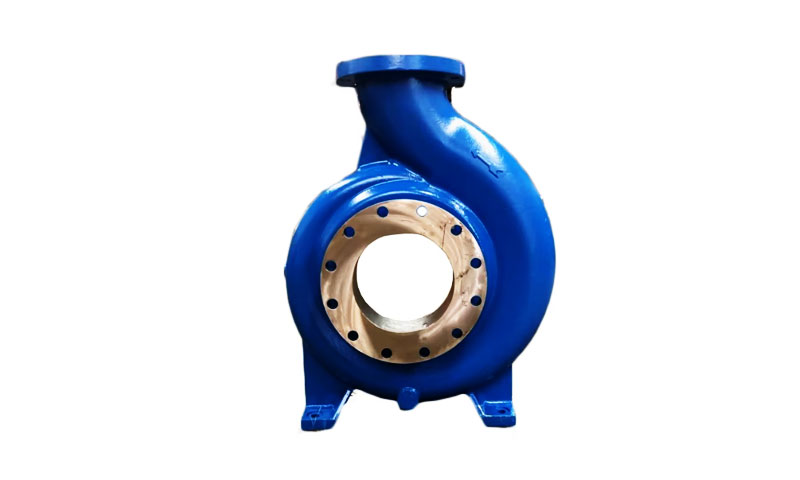1. Hōʻikeʻike
Pump bodies are structural and hydraulic housings that convert driver energy into fluid motion. They commonly contain volutes, impeller seats, bearing bosses, flanges and internal passages.
The manufacturing route chosen for a pump body sets achievable geometry, metralurgy, cost and lead time.
Investment casting stands out where geometry is complex (internal guide vanes, thin webs, integrated bosses), tolerances are tight, and high-integrity alloys (nā mea kanu lāʻau, nickel alloys, bale) koiʻia.
2. What Is an Investment Casting Pump Body?
Definition and core functionality
He mamo nei Kāhaka kūʻai kūʻai pump body is a pump housing produced by the lost-wax (waiwai kūʻai) Ke Kūleʻa Kūlana.
A wax (a polymer) pattern of the pump body is created, coated in refractory ceramic to build a shell, the wax removed by heating, and molten metal poured into the ceramic mold.
The fired shell is broken away after solidification to reveal a near-net cast pump body that is subsequently finished and inspected.
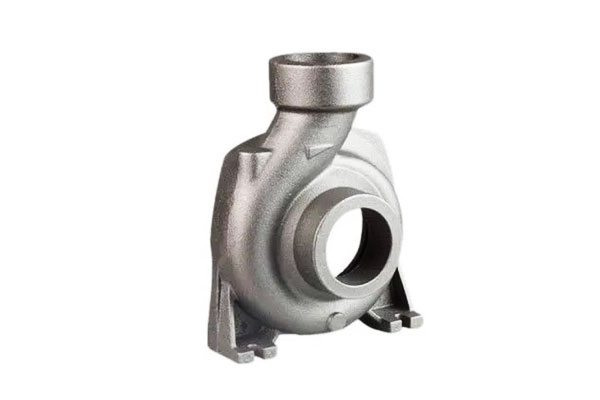
Typical specifications and dimensions
- Part mass: investment cast pump bodies usually range from a few hundred grams to tens of kilograms per piece; many foundries routinely cast pump bodies from ~0.5 kg up to ~50–100 kg depending on plant capability.
- Pilenawinui: typical nominal walls for stainless or nickel alloys: 3-12 mm; minimum thin sections down to 1-2 mm are achievable in selected alloys and process control.
- Timmansional (e like me-lawe): general investment cast tolerances commonly fall in ± 0.1-0.5 mm for small features; percent-based tolerance of ±0.25–0.5% linear is a practical rule of thumb.
Critical machined features are usually left with machining allowance (0.2–2.0 mm depending on casting accuracy). - Paulapua (e like me-lawe): typical Ra 1.6-3.2 μm (50-125 min) for standard ceramic shells; fine shells and careful pouring can produce Ra ≈ 0.8–1.6 μm.
Sealing faces or bearing journals are machined/lapped to much finer Ra (≤ 0.2 }m) as required.
3. Nā noʻonoʻo kānāwai
Investment casting enables complex geometry, but good design practice maximizes quality and minimizes cost.
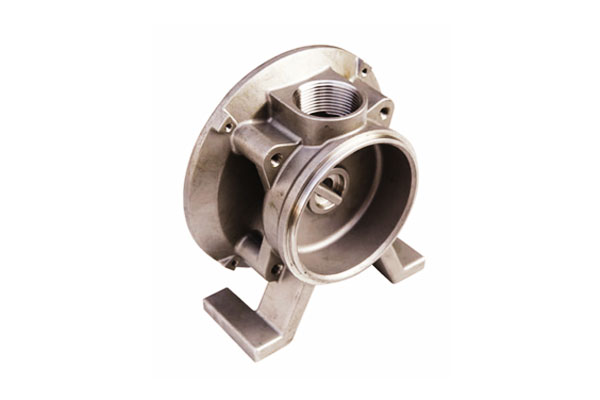
Hydraulic performance requirements
- Flow passages & volutes: smooth fillets and controlled convergence avoid separation and cavitation.
Internal fillet radii should be generous (≥ 1–2× wall thickness) to reduce turbulence. - Impeller seat alignment: concentricity and perpendicularity are critical — plan for machined bores and datum features.
- Clearances: pump clearances at impeller overhangs and seal faces must be maintainable by post-cast machining.
Structural requirements
- Stress & Kaluhi: consider cyclical loads; use finite-element analysis to identify local stress risers.
Cast metallurgy (ka nui o ka palaoa, lihao) affects fatigue life—design to avoid thin, highly stressed bosses without proper filleting. - Vibration: stiff webs and ribs help raise natural frequencies; investment casting allows ribs to be integrated into the body.
Kuupuiawi & ʻaʻa
- Koho koho: choose alloy based on fluid chemistry (ph, chrlodes, Nā kiko'ī, keka ao).
For seawater, duplex or cupronickel may be required; for acids, Hastelloy or appropriate nickel alloys. - Erosion resistance: smooth internal surfaces and sacrificial coatings (Kālā, thermal spray) are options where particulate slurry is present.
Nā mea hana dimensional & paulapua
- Nā hiʻohiʻona koʻikoʻi: designate which faces/bores are finish-machined and specify machining allowances (E.g., 0.5–1.5 mm for sandier shells, 0.2–0.6 mm for precision shells).
- Sealing surfaces: specify Ra and flatness; often lapped/polished to Ra ≤ 0.2 μm and flatness within 0.01-0.05 mm depending on pressure class.
4. Materials for Investment Casting Pump Bodies
Material selection is a critical factor in designing and producing investment-cast pump bodies, as it directly affects mechanical performance, Ke kū'ē neiʻo Corrosionion, mea hana, a lawelawe lawelawe.
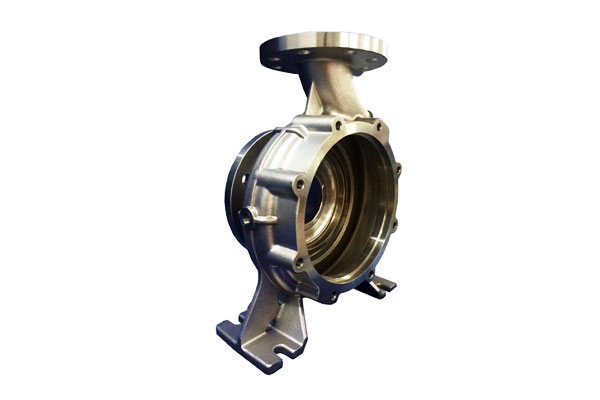
| Kālā hoʻoili | Hōʻike alloys | Nā mea nui | Nā noi maʻamau | Mau no nā manaʻo |
| Austetetitic Kila kohu ʻole | 304, 316L | Ke kū'ē neiʻo Corrosion Corrossion, ikaika, mea maikaʻi; Tersele: 480-620 mpa, Hua: 170-300 mPA, Ewangantion: 40-60% | General chemical pumps, Ke hana kino wai, meaʻai & hana hānai | Good molten fluidity, low hot-cracking risk, easy post-machining |
| ʻO ka kila kila fuplex | 2205, 2507 | Ikaika ikaika (Yield 450–550 MPa), superior chloride stress corrosion resistance | Marine and offshore pumps, nā hana hoʻohālikelike | Requires controlled temperature; post-casting heat treatment to prevent sigma phase |
Nickel alloys |
Actoel 625, 718; Hailani | Ke kū'ē neiʻo Corrosion Corrosion, ka ikaika kiʻekiʻe, ʻO ka pale oxidation | Ke kālepaʻana, mana pā'āʻu, pono & aila | High melting points (≈1450–1600 °C); careful mold preheating and controlled pouring needed; difficult machining |
| Bronze and Copper Alloys | C93200, C95400 | ʻO ka paleʻana o ka moana kai, ʻO ke kūpaʻa maikaʻi, antifouling; lower mechanical strength | Nā Marine Pumps, Ke Alanui Uila, Nā'āpana Hydraulic | Lower melting points (≈1050–1150 °C) simplify casting; low thermal cracking risk; mechanical strength lower than stainless/nickel |
5. Investment Casting Process for Pump Bodies
Kāhaka kūʻai kūʻai, Uaʻikeʻia e like me nalowale-wax casting, enables the production of pump bodies with complex geometries, nā pāʻili, a me ka pololei o ka dimensional kiʻekiʻe.
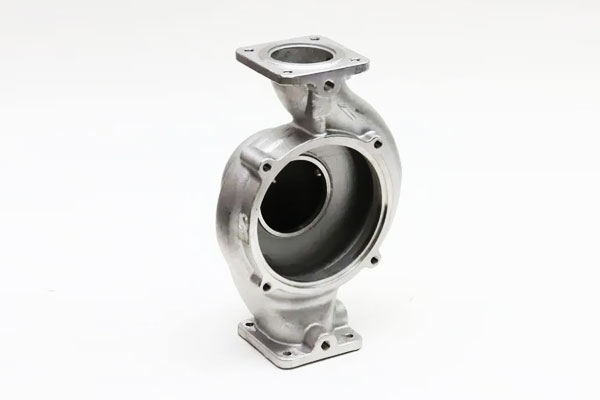
The process consists of several critical steps:
| 'Lelo | ʻO ka weheweheʻana | Nā manaʻo nui |
| 1. Wax kumu hoʻohālike | Molten wax is injected into precision molds to form replicas of the pump body. | Ensure uniform wall thickness; maintain dimensional accuracy ±0.1 mm; use high-quality wax to prevent distortion. |
| 2. Assembly of Wax Tree | Individual wax patterns are attached to a central wax sprue to form a tree for batch casting. | Sprue design affects metal flow; minimize turbulence during pouring. |
| 3. ʻO ka haleʻo CEMIMIC | Repeated dipping in ceramic slurry and stuccoing with fine refractory sand creates a strong, wela-resistant shell. | Target shell thickness (5-10 mm) depends on pump body size; avoid cracks and porosity in the shell. |
| 4. Dewaxing and Mold Firing | Wax is melted out (autoclave or kiln), e waiho ana i kahi lua; the ceramic shell is then fired to remove residues and strengthen the mold. | Temperature ramping must be controlled to prevent shell cracking; residual wax must be fully removed. |
5. E ninini ana i nā meatal |
Palapala Molly (kila kohu ʻole, nickel alloy, a iʻole bronze) is poured into the preheated ceramic mold under gravity or vacuum-assisted conditions. | Pouring temperature and rate must ensure complete filling; control turbulence and prevent oxide formation. |
| 6. Hōʻoia a me ka hōʻoluʻolu | Metal solidifies inside the mold; cooling rates affect microstructure, Nā Pīkuhi Propertinies, a me ke kaumaha kūlohelohe. | Thick sections may require controlled cooling to prevent porosity; thin walls must avoid hot tearing. |
| 7. Shell lawe | Ceramic shell is broken away mechanically, often using vibration, sand blasting, or chemical dissolution. | Avoid damaging intricate pump channels or flanges. |
| 8. Finishing and Cleaning | Residual ceramic, gating system, and surface imperfections are removed via grinding, pana pua, or chemical cleaning. | Maintain dimensional tolerances; prepare surfaces for subsequent machining or coating. |
6. ʻO nā hana kūʻaiʻana
After the pump body is removed from the ceramic shell, several post-casting operations are performed to ensure the component meets functional, huahuai, a me nā pono kūpono.
These operations are critical for high-performance applications in chemical, Marine, a me nā'āpanaʻoihana.
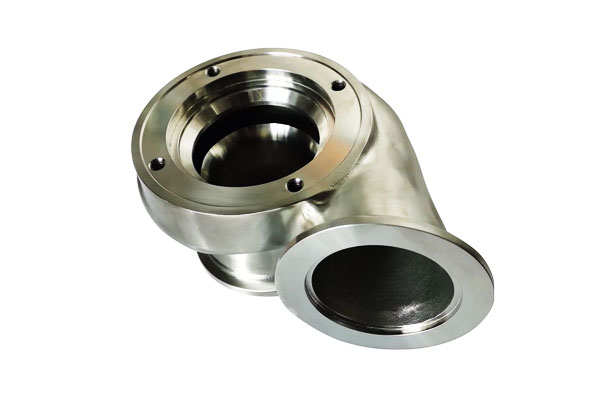
ʻO ka hana wela
ʻO ka hana wela is applied to relieve residual stresses, hoʻomaikaʻi i ka pono, and optimize mechanical properties:
- Kaumaha e hōʻoluʻolu ai: Heating to 550–650 °C for stainless steels reduces residual stress from casting and prevents distortion during machining.
- Hoʻoholo hōʻoluʻolu: Applied for stainless steels and nickel alloys to homogenize microstructure and dissolve unwanted precipitates, ensuring corrosion resistance and consistent hardness.
- Aging or Precipitation Hardening (for certain alloys): Enhances strength and wear resistance in high-performance materials.
Machimen
Critical dimensions such as flanges, Nā papa wai, mating surfaces, and threaded ports are machined to meet tight tolerances.
Typical machining operations include turning, MilightʻAʻole, hoʻomālamalama, and boring. Machining ensures:
- Dimensional tolerances of ±0.05–0.1 mm for precise assembly.
- Smooth sealing surfaces to prevent leaks in high-pressure applications.
Hoʻopau ʻili
Ke hoʻopauʻana Hoʻopili i ke kū'ē kū'ē, E kāʻei i ke kū'ē, a me nā aesthetics:
- ʻO ka hoʻopololei: Improves smoothness for sealing faces and internal channels.
- Pana pua: Removes residual ceramic particles and creates a uniform surface for coating or painting.
- Nā pāpale: Optional chemical or electroplated coatings (E.g., nickel, Ptfe) enhance corrosion resistance and reduce friction.
ʻO ka hōʻike hoʻokaumahaʻole (Ndt)
To detect defects such as porosity, Nā'ōpala, or inclusions, NDT is performed:
- Hoʻoili pūnaewele (X-ray): Identifies internal voids and inclusions.
- ʻO ka ho'āʻoʻana (U): Detects subsurface flaws in thick sections.
- ʻO ka ho'āʻoʻana e hōʻike ana (Pt): Reveals surface cracks and porosity.
Cleaning and Inspection
Hope loa, pump bodies are cleaned to remove residual machining oils, Pākū, or salts. Dimensional and visual inspections verify compliance with specifications before assembly or shipment.
7. Quality Assurance and Testing
Hōʻoia maikaʻi (QA) is critical in ensuring that investment casting pump bodies meet design specifications, performance standards, a me nā ponoʻoihana.
A systematic QA approach combines dimensional checks, Nā hōʻike hoʻokolohua hoʻokolohua, and non-destructive evaluation to detect defects and confirm functional integrity.
Ke nānāʻole neiʻo Dimensonal
Dimensional verification ensures that the pump body conforms to design drawings and tolerances:
- Hoʻonohonoho i nā mīkini hōʻailona (Cmm): Measure complex geometries, Nā papa wai, flanges, and mounting surfaces with accuracy of ±0.01–0.05 mm.
- Gauge Tools: Thread gauges, plug gauges, and height gauges verify critical features quickly in production.
- Ke Aniani Paintness: Confirms finishing requirements for sealing faces and internal channels (E.g., Ra ≤0.8 μm for hydraulic components).
Mechanical Property Verification
Mechanical testing validates that the material meets required strength, kumaikalua, a me paakiki:
- Teence Manaʻo: Measures yield strength, ultimate tensile strength, a me ka nui, ensuring the material can withstand operational loads.
- Hōʻike paʻakikī: Rockwell or Vickers testing confirms that heat treatment and material processing achieved the desired hardness.
- Hopena ho'āʻo (Inā makemakeʻia): Evaluates toughness for applications exposed to fluctuating loads or shock.
ʻO ka hōʻike hoʻokaumahaʻole (Ndt)
NDT techniques detect hidden defects without damaging the part:
- Hoʻoili pūnaewele (X-ray/CT Scanning): Identifies internal porosity, Nā Hoʻohui, and voids, particularly in thick sections.
- ʻO ka ho'āʻoʻana (U): Detects internal cracks, hemahema, or delaminations in dense materials like stainless steel and nickel alloys.
- ʻO ka ho'āʻoʻana e hōʻike ana (Pt): Reveals surface cracks, pinhotole, or fine porosity not visible to the naked eye.
- ʻO ka ho'āʻoʻana i ka mīkini magnetic (Mt): Applied for ferromagnetic alloys to detect surface and near-surface discontinuities.
Common Casting Defects and Mitigation Strategies
- Potiwale: Minimized through proper gating, kūhewaʻi, and controlled solidification rates.
- Nāʻuala: Addressed via riser design and thermal management.
- Nā'ūhā maloʻo a me nā kuhi hewa: Avoided by maintaining optimal pouring temperatures and smooth flow in complex geometries.
- Surface Inclusions: Controlled by using high-purity alloys and proper degassing techniques.
8. Advantages of Investment Casting for Pump Bodies
- ʻO ka geometry paʻakikī: Nā Passing kūloko, thin walls and integrated bosses with minimal secondary assembly.
- Kokoke i kahi kokoke: reduces material removal vs. rough machining from bar or billet — often 30–70% less machining No nā'āpana paʻakikī.
- ʻO ka pololei kiʻekiʻe kiʻekiʻe & paulapua: less secondary finishing for many features compared with sand casting.
- Alloy flexibility: cast many stainless and nickel alloys with good metallurgical integrity.
- Small to medium production flexibility: tooling for wax patterns is relatively inexpensive vs. large die tooling, enabling economic runs from prototypes to thousands of parts.
9. Nā palena a me nā paʻakikī
- Cost for very large parts: above certain sizes (pinepine >100 kg) investment casting becomes uneconomical compared with sand casting or fabricating/ welding.
- Ka manawa o waena o ka hoʻomaka a i ka wā pau: pattern tooling, shell building and firing add lead time—prototype timelines usually measured in weeks.
- Porosity risk in thick sections: thick bosses or large cross-sections require careful gating, chills or segmenting to avoid shrinkage.
- Surface finish and tolerances depend on shell system: achieving ultra-fine finishes or extremely tight as-cast tolerances requires premium ceramic systems and process control.
10. Nā noiʻenehana
Investment casting pump bodies are used across a broad spectrum of industries due to their complex geometry capabilities, Nā Kūlana Kūʻai, a me ka pololei o ka dimensional kiʻekiʻe.
The process allows engineers to design optimized hydraulic passages, nā pāʻili, and integrated mounting features that improve pump efficiency and longevity.
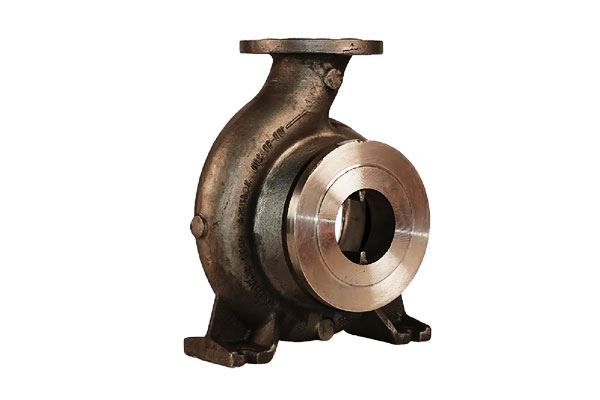
Chemical Processing Pumps
- Kaʻona: Corrosive fluids such as acids, caustics, a me nā kala.
- Materials Used: Nā mea kanu lāʻau (316L, Duplex) and nickel alloys (Hailani, Actoel).
- 'Āpana: Investment casting enables intricate internal channels, minimizing turbulence and ensuring uniform flow, critical for chemical process reliability.
Water and Wastewater Pumps
- Kaʻona: High-volume pumping, abrasive suspended solids, and variable pH levels.
- Materials Used: Bronze, ʻO ka kila kila fuplex, and corrosion-resistant cast irons.
- 'Āpana: Thin-wall, smooth internal passages reduce clogging and energy losses, improving efficiency in municipal and industrial water systems.
Marine and Offshore Pumps
- Kaʻona: Saltwater exposure, high-pressure operation, and cyclical mechanical stress.
- Materials Used: Nā pāpale keleawe (Nāʻili manu, bronze), ʻO nā mea kanu pīpī fuplex.
- 'Āpana: Resistance to corrosion and biofouling is critical; investment casting allows seamless, complex geometries to reduce maintenance and improve service life.
Pono & Gas and Power Generation Pumps
- Kaʻona: Ka mahana kiʻekiʻe, high-pressure fluids, and hydrocarbon-based media.
- Materials Used: High-nickel alloys (Actoel, Hailani), kila kohu ʻole, and cobalt-based alloys.
- 'Āpana: Investment casting supports high-strength materials and precise tolerances necessary for critical applications such as turbine lubrication, chemical injection, and offshore drilling.
Specialty and Custom Pumps
- Kaʻona: Laboratory, Ka Makani, or food processing applications requiring hygienic and precision performance.
- Materials Used: Kila kohu ʻole (304, 316L), Titanium, a iʻole nicicl alloys.
- 'Āpana: Nā papa'āina, nā hoʻomanawanui paʻa, and complex geometries achieved by investment casting ensure minimal contamination risk and compliance with regulatory standards.
11. Hoʻohālikelike hoʻohālikelike
| Pili / Kūlike | Hoʻolei kālā | Sand cread | Machining from Solid |
| ʻO ka paʻakikī o Geometric paʻakikī | Excellent – thin walls, nā channels kūloko, intricate features achievable | Moderate – limited by core placement and mold stability | Limited – complex internal geometries often impossible without assembly |
| Dimensional pololei | High – ±0.1–0.25 mm typical | Moderate – ±0.5–1.0 mm | Very High – ±0.05 mm achievable |
| Hoʻopau ʻili (Ra) | Fine – 1.6–3.2 μm typical; can be polished | Rough – 6–12 μm; requires machining for precision | Excellent – 0.8–1.6 μm achievable with finishing |
| Nā Koho Kōkua | Wide – stainless steels, nickel alloys, bronze, Nā pāpale keleawe | Wide – iron, Kukui Kekuhi, bronze, aluminum | Wide – depends on machinable stock availability |
| Nui ka laulā | Low-to-medium – 1–1000+ parts | Medium-to-high – economical for large, nā'āpana maʻalahi | Low – material waste increases cost for large parts |
| Ka manawa o waena o ka hoʻomaka a i ka wā pau | Moderate – wax pattern & shell building required | Short-to-moderate – mold preparation relatively quick | Variable – depends on machining complexity |
Nā Kūlana Kūʻai |
Low – near-net shape reduces scrap | Moderate – gating and risers generate some waste | High – subtractive process creates chips and offcuts |
| Kumukūʻai no kēlā me kēia'āpana | Moderate-to-high – tooling and process steps increase cost, economical for complex parts | Low-to-moderate – simpler molds, larger parts cheaper | High – extensive machining on large, complex parts is expensive |
| Ikaika & Huakai | Excellent – dense microstructure, minimal porosity if controlled | Moderate – risk of sand-related inclusions and porosity | Excellent – homogeneous, ʻAʻole nā mea kūʻai aku i nā hemahema |
| Post-Processing Required | Often minimal – some machining, Ke hoʻopauʻana | Usually significant – machining and finishing required | Minimal – final finishing for tight tolerances only |
| Nā noi maʻamau | Pump bodies with thin walls, complex hydraulic channels, Ke kū'ē neiʻo Corrosionion | Nui, simple pump housings or structural components | Custom or prototype pump bodies requiring extreme precision |
12. Hopena
Investment casting pump body combines design freedom with metallurgical integrity, making them an excellent choice for many fluid-handling applications—especially where complex internal geometry, exotic alloys or tight tolerances are required.
Success depends on early design for casting, informed material selection, careful process control (E ninini ana, shelling, ʻO ka hana wela), and robust QA/NDT programs.
For critical pump systems—marine, chemical or power generation—investment casting can deliver reliable, economical components when specified and executed correctly.
FaqS
What maximum size of pump body can be investment cast?
Typical shop practice ranges up to ~50–100 kg per part, but the practical maximum depends on foundry capability and economics.
Very large pump bodies are more often produced by sand casting or fabricating/welding.
How much machining allowance should I design into an investment casting?
ʻAe 0.2-2.0 mm depending on the criticality and shell precision. Specify tighter allowances only where the foundry guarantees precision shells.
Which material is best for seawater pump bodies?
Duplex stainless steels and selected copper-nickel alloys are common choices due to superior chloride pitting resistance and biofouling performance; final selection depends on temperature, velocity and erosion conditions.
What is the typical turnaround time for an investment-cast pump body?
Small production runs typically take 4-8 mau pule from pattern approval to finished parts; single prototypes can be faster with 3D-printed patterns but still require shell firing and melt schedules.
How do I specify acceptance criteria for porosity?
Use industry NDT standards (hoʻoili pūnaewele, Ct, U) and define acceptance levels in percent porosity by volume or via reference images.
Critical pressure-retaining pump bodies often require porosity <0.5% by volume and radiographic acceptance per customer standard.
